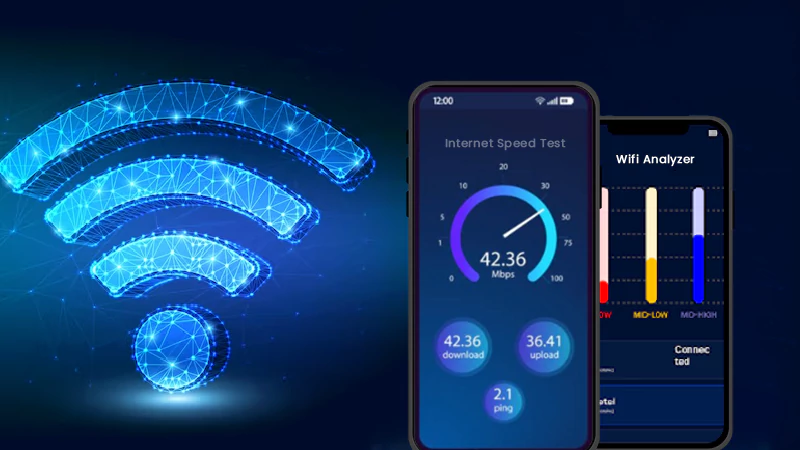When will the Internet Develop to a Point Where Direct Calling Becomes Obsolete?
In today’s fast-paced world, communication is critical, and the way we communicate has transformed over the years. The advent of the internet has revolutionized the way we interact with each other, and as a result, traditional communication methods such as direct calling have taken a back seat. With advancements in technology, the internet has become a powerful tool for communication, enabling us to connect with people from all corners of the world in real-time. However, the question remains, when will the internet develop to a point where direct calling becomes obsolete?
In this blog post, we will explore the evolution of communication technology and how it has impacted direct calling. We will discuss the potential future of communication technology, including advancements in Artificial Intelligence and Natural Language Processing, and how they could shape the future of direct calling. Additionally, we will consider the factors that could influence the transition and the potential benefits and drawbacks of a point where direct calling becomes obsolete. Ultimately, this post aims to shed light on the future of communication technology and its implications for individuals and businesses alike.
The Evolution of Communication Technology
Over the years, communication technology has evolved significantly. Traditional communication methods such as direct calling have given way to newer and more advanced technologies, such as messaging and video conferencing. The shift towards messaging started with the introduction of instant messaging applications, which enabled individuals to communicate in real-time using text-based messages. This provided a more flexible and cost-effective alternative to direct calling.
In recent years, video conferencing has gained immense popularity, especially in the wake of the COVID-19 pandemic. Video conferencing platforms like Zoom and Skype allow individuals to communicate in real-time using both audio and video, irrespective of geographical location. This has revolutionized the way businesses operate, enabling teams to collaborate remotely without the need for physical meetings.
Furthermore, the rise of social media has also contributed to the evolution of communication technology. Social media platforms such as Facebook, Twitter, and Instagram have enabled individuals to connect with each other, share information and communicate in real-time, often through messaging.
In summary, the evolution of communication technology has drastically changed the way we communicate with each other. While direct calling is still prevalent, newer technologies such as messaging and video conferencing have provided more flexible and cost-effective alternatives.
The Future of Communication Technology
The future of communication technology is exciting and promising, with advancements in Artificial Intelligence (AI) and Natural Language Processing (NLP) leading the way. AI and NLP can enable more natural and human-like conversations between individuals and machines, leading to a more intuitive and seamless communication experience.
Sometimes, you receive a call, and you wonder to yourself, “Who called me from this phone number?” Fortunately, technology has made it easier to identify unknown numbers. Various services can help identify the caller’s name and location. This technology is becoming more sophisticated, and it’s not far-fetched to imagine a future where unknown callers are immediately identified through an integrated AI-powered system.
Moreover, AI and NLP can be integrated into communication platforms, enabling more efficient and personalized communication. For example, an AI-powered chatbot can understand and respond to natural language queries, providing immediate assistance to users. Additionally, NLP technology can analyze speech patterns to detect emotion, which can be useful in business settings, such as customer service.
In conclusion, the future of communication technology looks bright, with AI and NLP at the forefront of innovation. As technology continues to advance, we can expect more intuitive and efficient communication experiences, including better identification of unknown numbers and more natural language conversations with machines.
Factors That Could Influence the Transition
Several factors could influence the transition from direct calling to more advanced communication technologies. One of the most significant factors is the rate of adoption of new technologies. While newer communication technologies offer several advantages over traditional methods, it may take time for individuals and businesses to become comfortable using them. Therefore, the speed of adoption could impact how quickly direct calling becomes obsolete.
Infrastructure and connectivity limitations could also play a role in the transition. Communication technologies, such as video conferencing, require a stable internet connection, which may not be accessible in all locations. Similarly, the use of AI and NLP may require more powerful devices, such as smartphones or computers, which may not be affordable for all individuals and businesses.
Cultural differences and preferences could also influence the transition. Some cultures may place a higher value on face-to-face communication or direct calling, which may slow down the adoption of newer technologies. Additionally, some individuals may prefer the personal touch of direct calling over the more impersonal nature of messaging or video conferencing.
Potential Benefits and Drawbacks of a Point Where Direct Calling Becomes Obsolete
A point where direct calling becomes obsolete could have several potential benefits and drawbacks. One of the significant benefits of newer communication technologies is improved efficiency. Messaging and video conferencing can be more time-efficient than direct calling, enabling individuals to communicate more quickly and without the need for lengthy conversations.
Greater accessibility is another potential benefit. Messaging and video conferencing can be done from anywhere with an internet connection, making it easier for individuals and businesses to communicate across geographical distances.
However, there are also potential drawbacks to the point where direct calling becomes obsolete. One of the most significant drawbacks is the potential loss of personal connection. Direct calling provides a level of personal connection that messaging and video conferencing cannot replicate, which could negatively impact relationships and communication quality.
Another potential drawback is the overreliance on technology. Relying solely on technology for communication could lead to a loss of important communication skills, such as active listening and effective verbal communication.
Conclusion
In conclusion, the future of communication technology is rapidly evolving, and the transition from direct calling to more advanced communication technologies may happen sooner than we think. While newer communication technologies such as messaging, video conferencing, and AI-powered chatbots offer several benefits, it is crucial to understand the potential drawbacks, such as the loss of personal connection and overreliance on technology.
Factors such as the rate of adoption, infrastructure and connectivity limitations, and cultural preferences could influence the transition toward newer technologies. It is critical to consider these factors to ensure a smooth transition that benefits both individuals and businesses.
In the future, we can expect communication technologies to become even more sophisticated, offering more personalized and intuitive communication experiences. It will be essential to find a balance that enables individuals and businesses to communicate effectively while maintaining personal connections.
Exploring Common 2-Story Houses Energy Usage Patterns and…
How Long Does It Take to Obtain An…
The Secrets Behind High-Performance Racing Windows
Co-Parenting Strategies for Divorced or Separated Parents in…
How Auto Lawyers Help Victims of Distracted Driving…
How Can an Attorney Help in a Trucker…
What is the Rule of Thumb for Pipes?
Best DVD Rippers for Windows & Mac: Free…
Reducing the Impact of Unexpected Construction Expenses
8 Ways to Improve Wi-Fi Speed and Stability…
What Information Can Be Gleaned From a Funnel…
Essential Strategies to Make Hotel Management Easier












